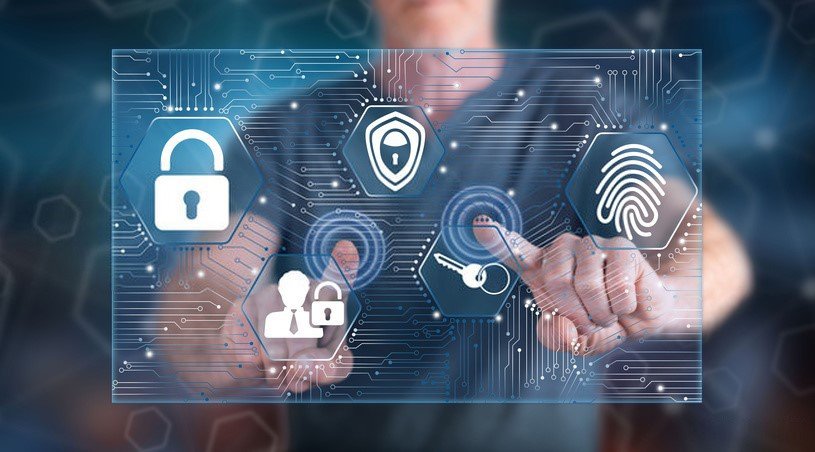
Identity verification has become critical in our daily lives. Verifying one’s identity is more crucial than ever because of the increase in online contacts and transactions. Identity verification, for example, shields firms from the risks of cyber fraud. It can also help individuals when dealing with online marketing.
In other words, without identity verification, the digital economy would implode. Businesses would struggle to distinguish between loyal customers and scammers. As a result, the whole digital world is based on identity verification. It increases trust in online transactions while protecting money and personal information.
The article lists complete details on identity verification to help you protect your customer data and avoid any cyber threat.
Table of Contents
What Is ID Verification?
The process of validating a person’s legality and authenticity is known as identity verification. It requires thoroughly examining their data, such as their name, age, place of residence, and other identifying information. This crucial information is cross-referenced with official documents or paperwork, such as passports, licenses, or social security numbers.
The core of knowledge-based authentication is personal knowledge, generally in the form of security questions. On the other hand, biometric identification is based on each person’s unique biological characteristics. Furthermore, multi-factor authentication combines many verification stages to ensure the authenticity of an individual’s identity.
Identity verification is the cornerstone of establishing trust in the digital domain. It allows people and organizations to function in a digital environment while ensuring that interactions are secure, dependable, and based on authentic identities.
Why Is Identity Verification Necessary In The Digital Age?
Identity verification protects individuals and companies from the assault of fraud, cybercrime, and online deception.

With the expansion of digital transactions and virtual chats, you must have faith that the person on the other side of the screen is who they claim to be. As imposters attempting to break your digital fortresses, identity verification provides an impenetrable barrier between fraudsters and critical data. It prevents them from gaining unauthorized access to sensitive data or stealing personal information. People may confidently transact, communicate, and navigate the virtual world, knowing that the basis of verified identity protects their online activities.
Identity verification also gives individuals total control over their identities, allowing them to manage their online privacy. It protects your identity in a culture where the line between reality and the digital world is increasingly blurred.
What Are Some Standard Methods Of Identity Verification?
There are several techniques for verifying one’s identification. The suitable approach will depend on the amount of security necessary, the convenience of the verification process, and the individual use case.
1. Biometric Authentication
This strategy is based on each individual’s unique biological traits. Biometric techniques include scanning fingerprints, faces, irises, and voices.
2. Knowledge-Based Authentication
This method validates identification by using information that should only be known by the genuine individual. This typically entails inputting a password or personal identification number (PIN), responding to challenges, or answering identity-related questions.
3. Multi-Factor Authentication
MFA is the combination of two or more separate authentication mechanisms. Combining knowledge-based and biometric authentication technologies makes the verification process more safe.
4. Two-Factor Authentication
This strategy necessitates the user’s knowledge (such as a password) and ownership (such as a mobile device for receiving one-time codes).
5. Document Verification
Individuals must provide formal identification, such as a passport, driver’s license, or identification card. These documents are appraised based on database cross-referencing or authenticity tests.
6. Tokenization
Tokenization is using a unique code or token delivered to a user’s device as an identification document. This token is a one-time, time-limited authentication measure.
What Are Some Potential Challenges In Identity Verification?
Identity verification raises significant challenges. Overcoming these concerns requires a plan that combines dependable technology, secure data management practices, and transparent regulatory frameworks.
1. Privacy Concerns
One of the most difficult challenges is submitting personal information for verification. Although the system requires it, if the verification mechanism is not secure, persons may be vulnerable to data breaches, hacking, or identity theft.
2. False Positives
Identity verification systems may occasionally produce “false positives.” This occurs when flaws in the verification process cause genuine persons to be rejected or denied access. Users may find this irritating and have a negative user experience.
3. Interoperability Issues
Different organizations may use differing systems and standards for identity verification. When users authenticate their identity across several platforms, inefficiencies, complexity, and potential security problems might result from a lack of compatibility across various systems.
4. Biometric Data Security
Sensitive biometric data may become a target for misuse and cyberattacks if not appropriately safeguarded.
5. Data Use And Consent
Users must be informed about how identity verification systems will use their information before it is collected or processed, and affirmative consent must be obtained.
6. Regulatory and Legal Compliance
Identity verification techniques must adhere to privacy rules and regulations such as the GDPR in Europe and the HIPAA in the United States
Bottom Line
Identity verification during the pandemic allowed businesses to continue operating without in-person client interactions. The implications of this technology’s continuous advancement and refinement extend far beyond its economic impact. It serves as a vital foundation for both individual and organizational resilience.
ID verification aids in navigating and conquering the obstacles presented by the digital world, such as identity theft, fraud, and scams. It fosters business growth and personal empowerment by enabling distant connections and equipping individuals with the skills they need to respond to invasions quickly and safely.
Final Tips and Thoughts
our journey into the world of ID verification has unveiled a dynamic and evolving landscape that plays an increasingly pivotal role in our digital age. As technology advances and the digital sphere continues to expand, the imperative for robust and secure methods of identifying individuals becomes all the more evident.
Throughout our exploration, we’ve encountered many innovative solutions and techniques designed to enhance security, privacy, and convenience. Biometric authentication, multi-factor authentication, and blockchain-based identity systems are just a few examples of the cutting-edge approaches employed to tackle identity verification challenges.
However, it’s crucial to recognize that while these advancements hold immense promise, they also raise important questions about privacy, data security, and ethical considerations. Striking a delicate balance between security and individual rights remains a continuous challenge that demands careful attention and ongoing scrutiny.
As we move into the digital future, it is clear that the world of ID verification will remain a focal point of technological development and regulatory concern. A harmonious coexistence between technological innovation and safeguarding individual rights will be the cornerstone of a successful and trustworthy ID verification ecosystem. Only by addressing these complex issues can we ensure that identity verification continues to serve as a cornerstone of trust in our increasingly interconnected world.
Explore more about RedGif and its role in ID verification to gain a deeper understanding of this vital aspect of our digital future.